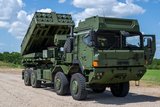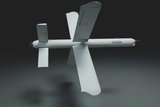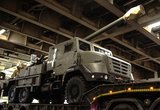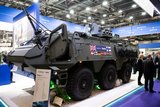AI3 programme completes further flight testing
The US Army’s Accelerated Improved Intercept Initiative (AI3) programme has reached a new milestone, with Raytheon successfully intercepting and destroying a low quadrant elevation (QE) 107mm rocket as part of the second series of guided test vehicle (GTV) flight tests. Live-fire engagements for the programme are scheduled to begin in September.
The AI3 programme is being conducted in response to a US Army requirement for enhanced warfighter protection through the development of a system capable of destroying a wider array of incoming rockets, artillery and mortars than previously deployed solutions.
During the tests, AI3 interceptor initially guided on inflight radio frequency (RF) data link updates from the Ku RF Sensor radar, which was tracking an inbound rocket target threat. The interceptor then transitioned to terminal guidance using the interceptor's onboard seeker and the illumination from the radar to guide the missile to within lethal range. The target was then detected using an active RF proximity fuse that determined the optimal detonation time for the warhead. With these measurements, the missile calculated the appropriate warhead burst time and defeated the incoming threat.
Michael Van Rassen, the US Army's project director for Counter Rockets, Artillery and Mortars (C-RAM) and AI3, said: ‘Beginning only 18 months and one week ago, and with firm cost requirements, the AI3 interceptor project successfully engaged and destroyed an inflight rocket on a challenging, high-speed flight profile greatly enhancing the range of existing capabilities. The project used a system of systems approach that lowered risk and enabled an accelerated schedule by leveraging existing government components and off the shelf subsystems to expand the footprint of the protected area for our warfighters.’
Steve Bennett, Raytheon Missile Systems AI3 program director, added: ‘This is a significant technical and performance milestone for the programme and our team that met the army's tight schedule and costs objectives. This second GTV demonstrated full integration of the AI3 Battle Element with the C-RAM command and control architecture against the threat target.’
The AI3 Battle Element system includes a Raytheon Ku Radio Frequency System (KRFS) Fire Control Radar, an Avenger-based AI3 launcher, a C-RAM command and control, Technical Fire Control, and the Raytheon AI3 interceptor missile.
The US Army will conduct for-the-record testing of AI3 in September, and continue to engage and destroy baseline and enhanced capability targets such as 107mm and other rockets, unmanned air systems and other threats to forward operating bases.
More from Land Warfare
-
![Hungary set to begin using Hero 400 loitering munitions]()
Hungary set to begin using Hero 400 loitering munitions
Developed by Israel's Uvision and with systems being sold in the thousands to multiple European NATO countries and the US, the Hero family of loitering systems is also in production in the US and Italy, the latter through Rheinmetall.
-
![Lithuanian 1st Division to achieve initial operating capability in 2026]()
Lithuanian 1st Division to achieve initial operating capability in 2026
Lithuania is one of the countries stepping up its defences in the face of the war in Ukraine with a particular focus on its neighbour and Russian ally Belarus, which has been making incursions into Lithuania’s airspace with balloons and drones.
-
Medium knocked out of British Army LMP, with CAVS as heavyweight champion
As the British Army seeks to modernise and consolidate its diverse vehicle fleet, yet another change in direction is underway.























